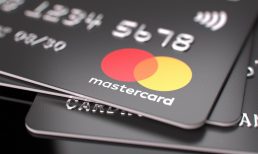“Most merchants today lack little insight into a customer’s online habits,” says Chuck Huang, founder and CEO of Citcon. “Restaurant guests may now read menus on their phones, but few restaurants lack the sophistication to retarget them afterward.” Read more about why Huang believes it’s so critical for merchants to bridge the brick-and-mortar/online divide and deliver a seamless omnichannel experience in The Connected Economy’s Power Source – CEO Edition.
At Citcon, we believe that payments as a horizontal will be most transformational in bridging the brick-and-mortar and online worlds. Merchants have had difficulties connecting their customers’ in-store experiences with their digital brand interactions.
Payments is a logical place for this shift to start to occur in a dramatic fashion. By connecting payment methods with a customer’s digital profile, a merchant has a greater ability to be more tailored in virtual customer service, advertising and the overall customer experience, leveling the playing field between digitally native brands and their older competitors.
Most merchants today lack little insight into a customer’s online habits. Restaurant guests may now read menus on their phones, but few restaurants lack the sophistication to retarget them afterward. Very few retailers have the ability to connect in-store purchases with online research to determine what the customer bought and why.
A payment experience that encourages device usage in-store could change all of that, enabling in-store checkout to have the same conversion data as online checkout, opening a whole new suite of digital tools, like performance marketing, to merchants. As one example of payment innovation, our customer iShoppe has used QR code payments – not only for transactions, but also for offer redemption as well. This gives them the ability to understand in-store responses to online advertising. This can scale.
Restaurant owners who use digital payments to link a customer’s online profile can provide tailored offers to drive the customer back to their restaurant with incentives during slow periods. Store owners can directly relate basket sizes to digital marketing investments to more finely tune their advertising.
Advertisement: Scroll to Continue
All of this will help to increase the productivity of advertising investments, decreasing costs to enable lower prices for consumers. The key to enabling this will be forward-thinking merchants who understand the potential unlocked by driving mobile payments in-store.




